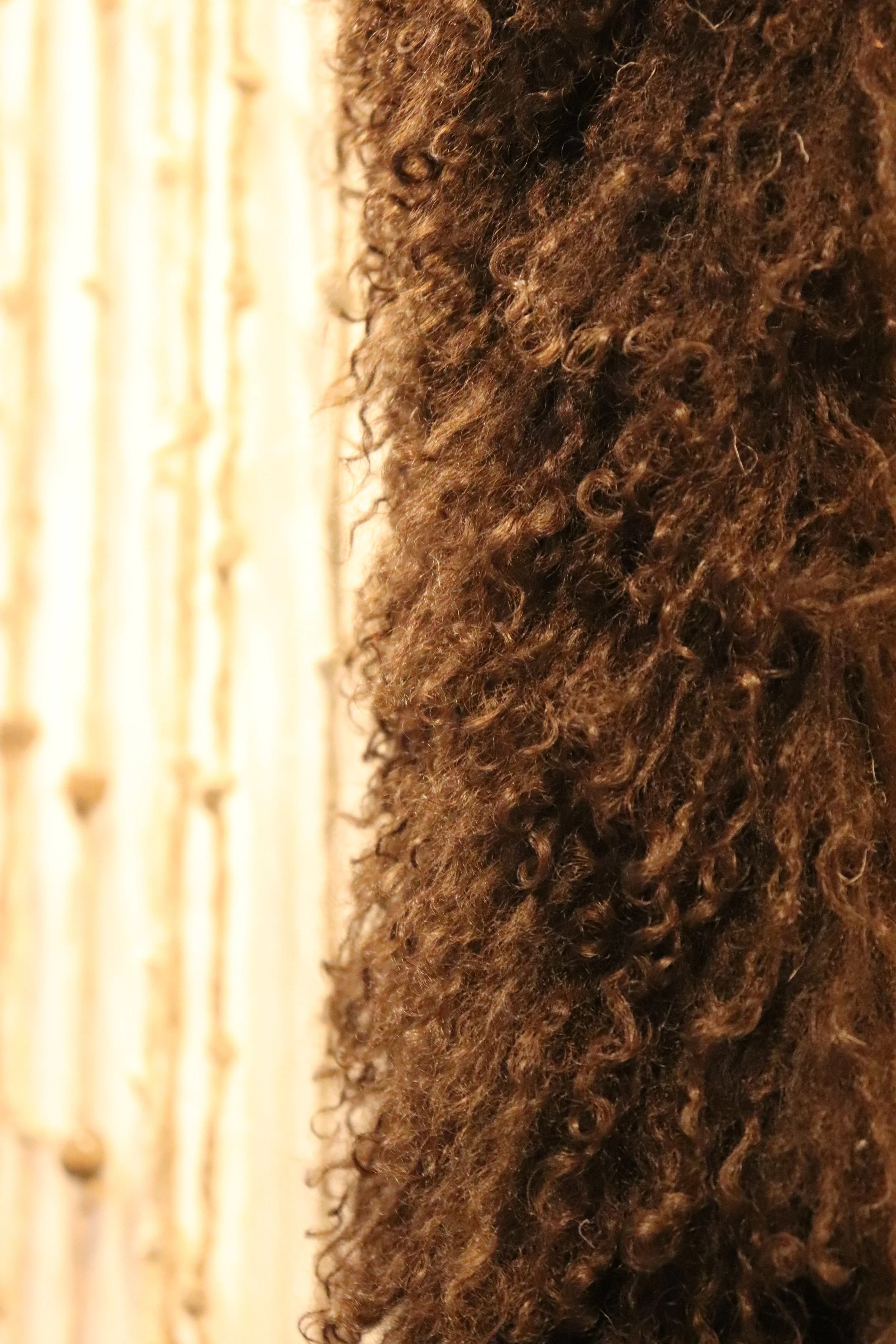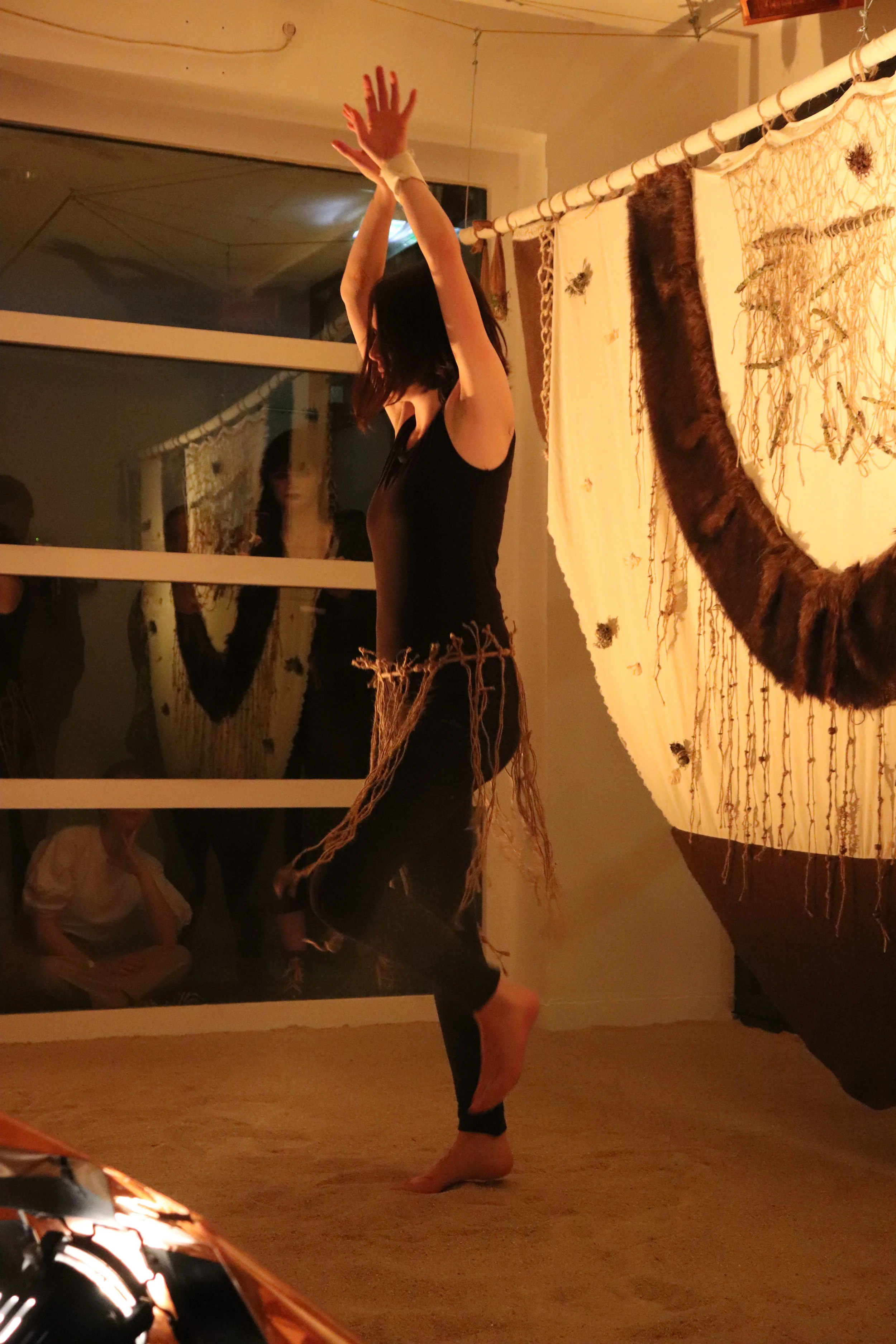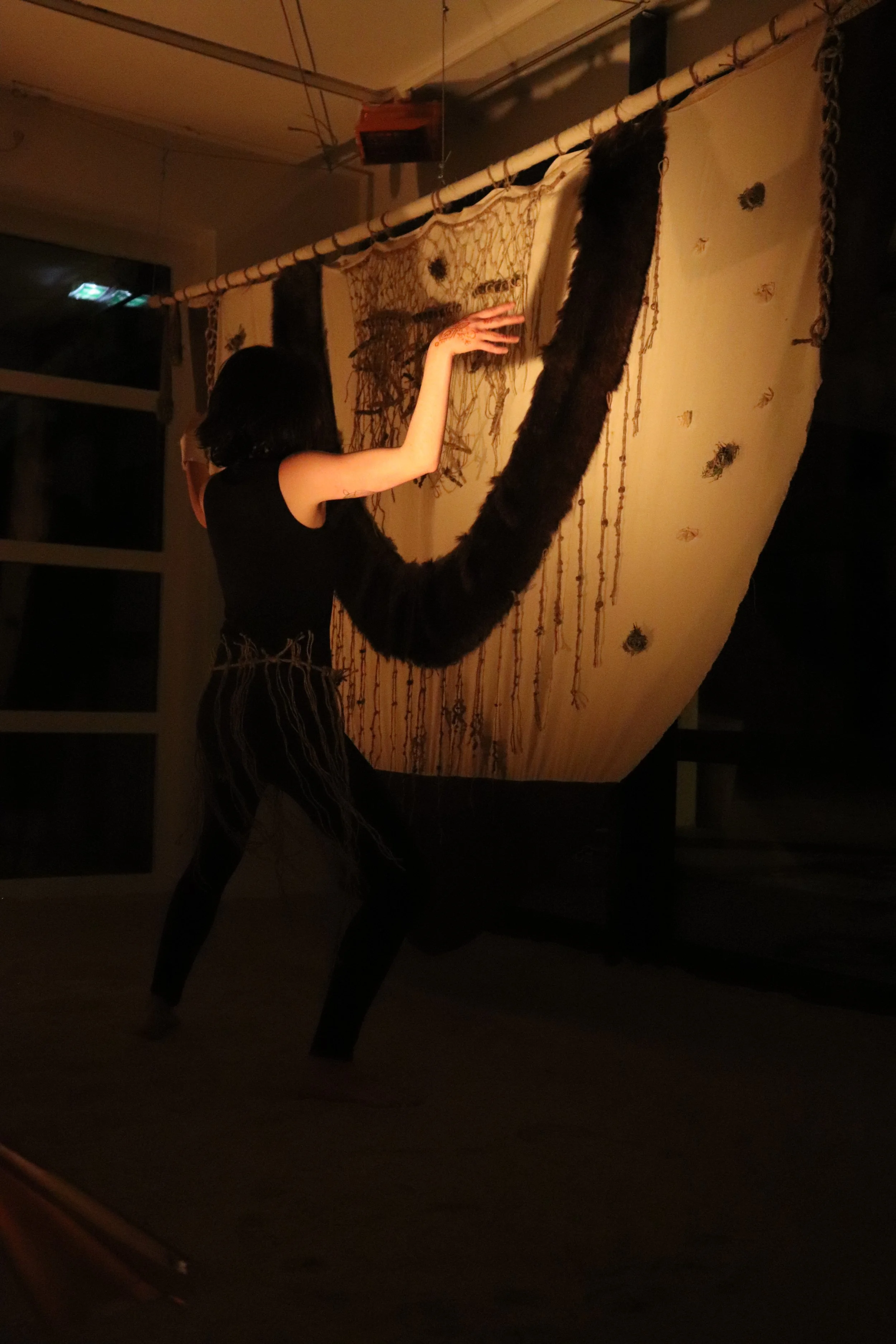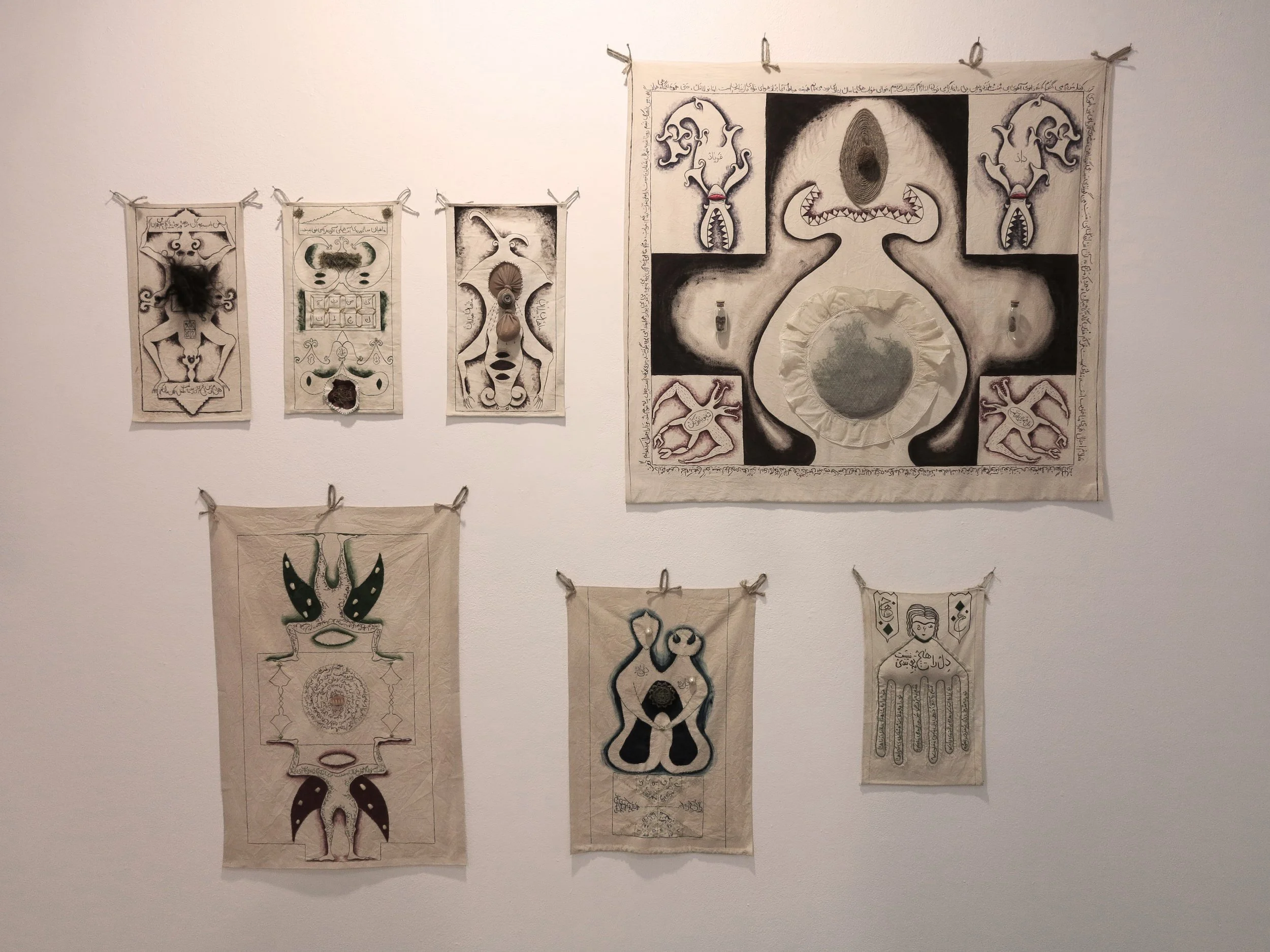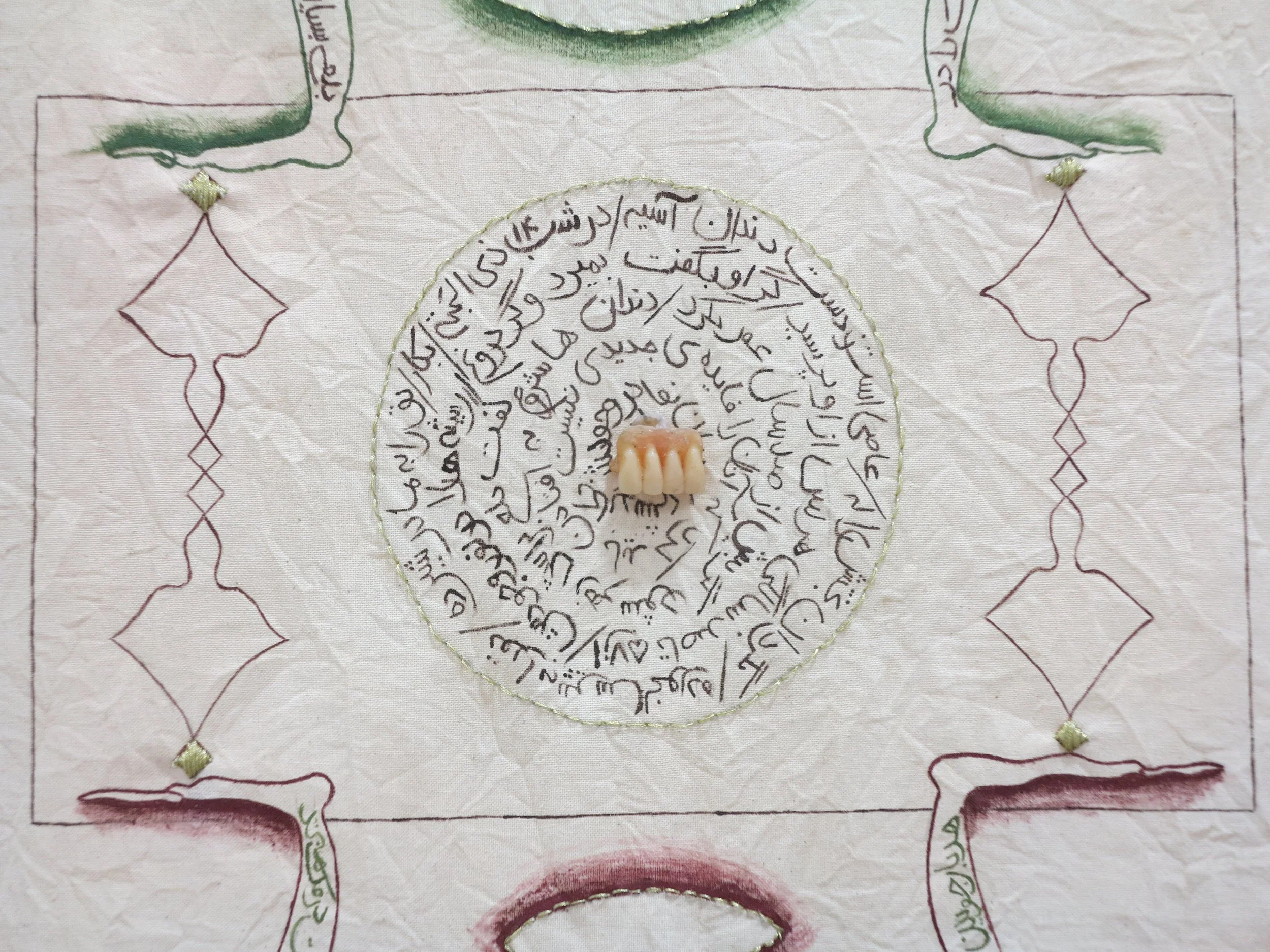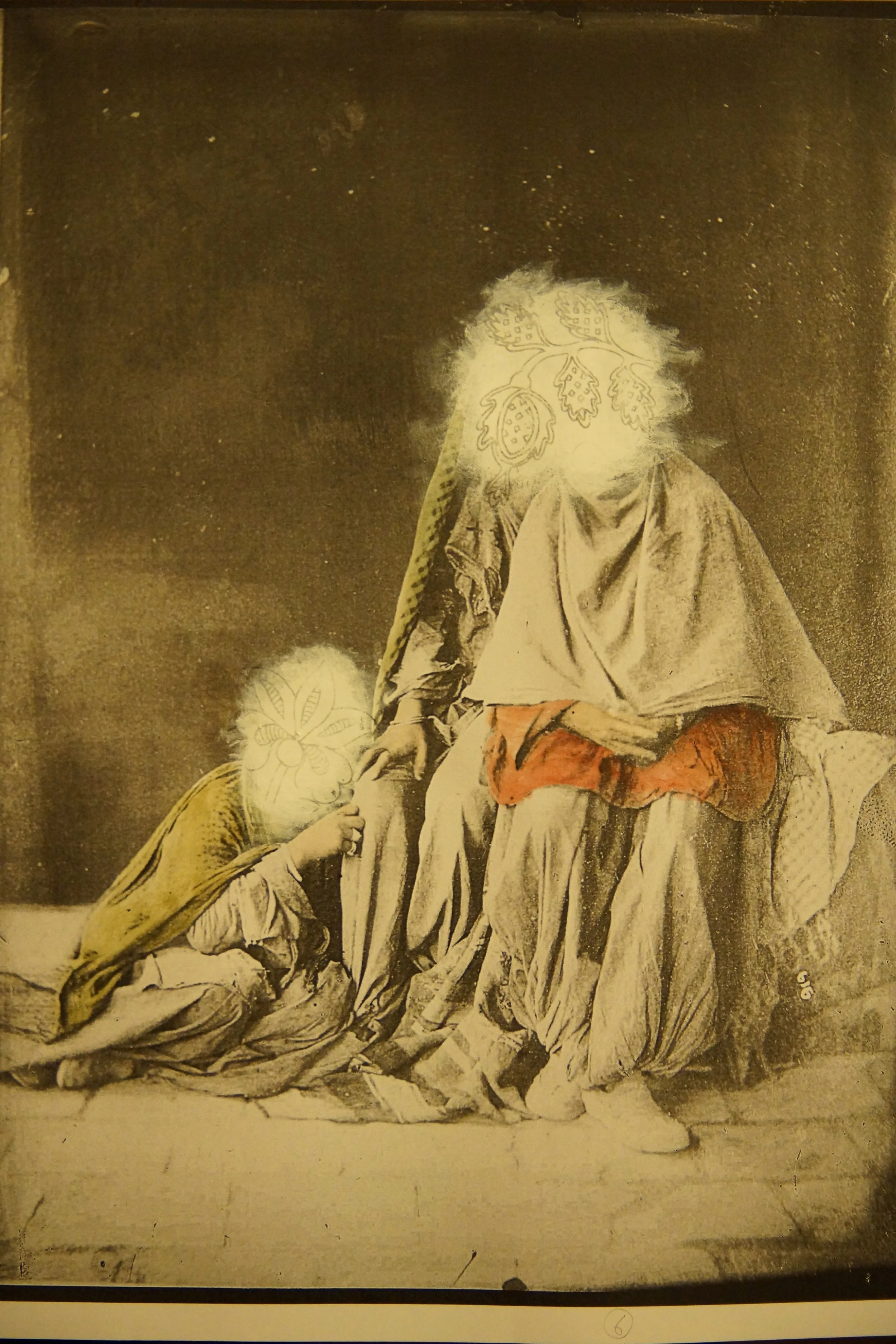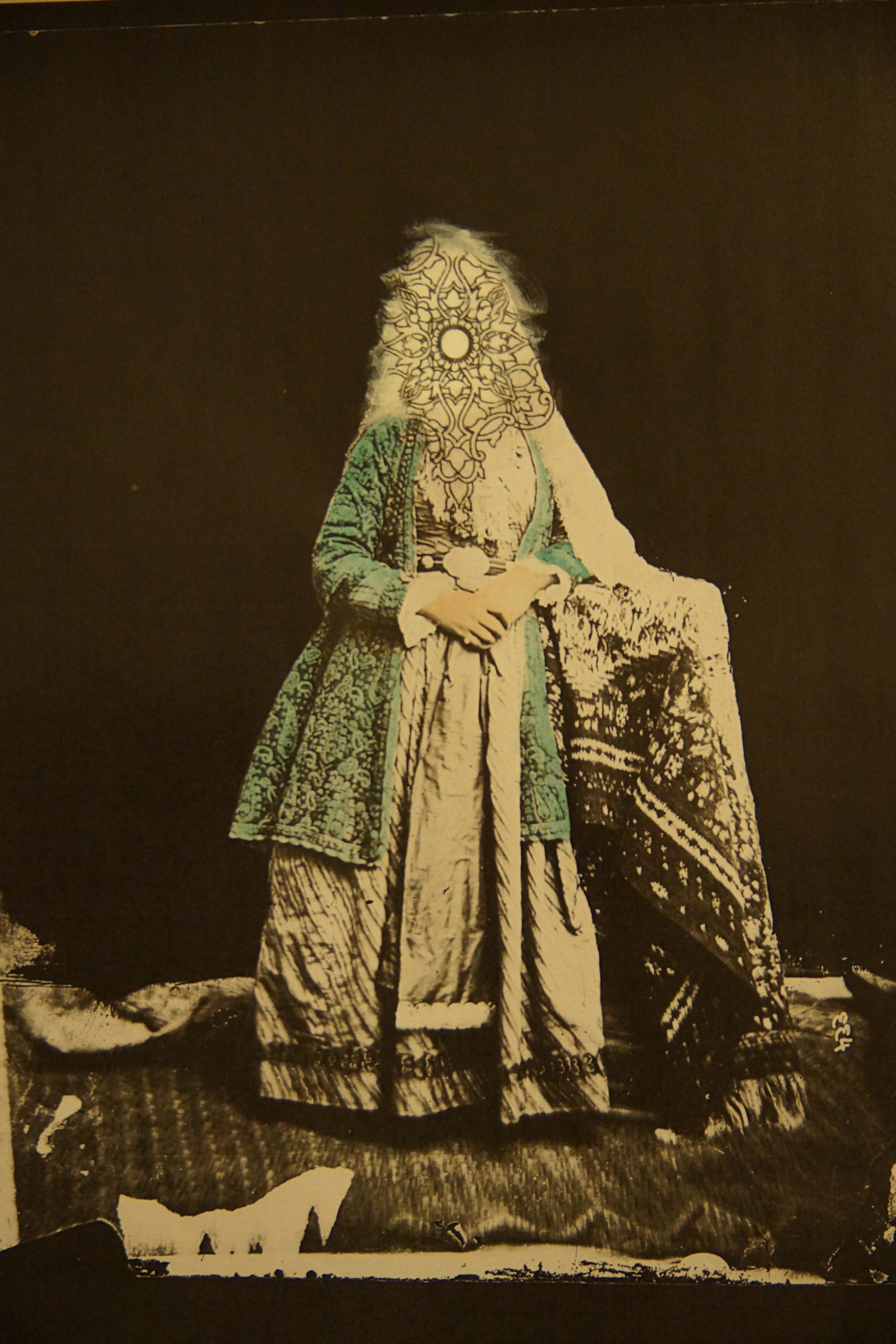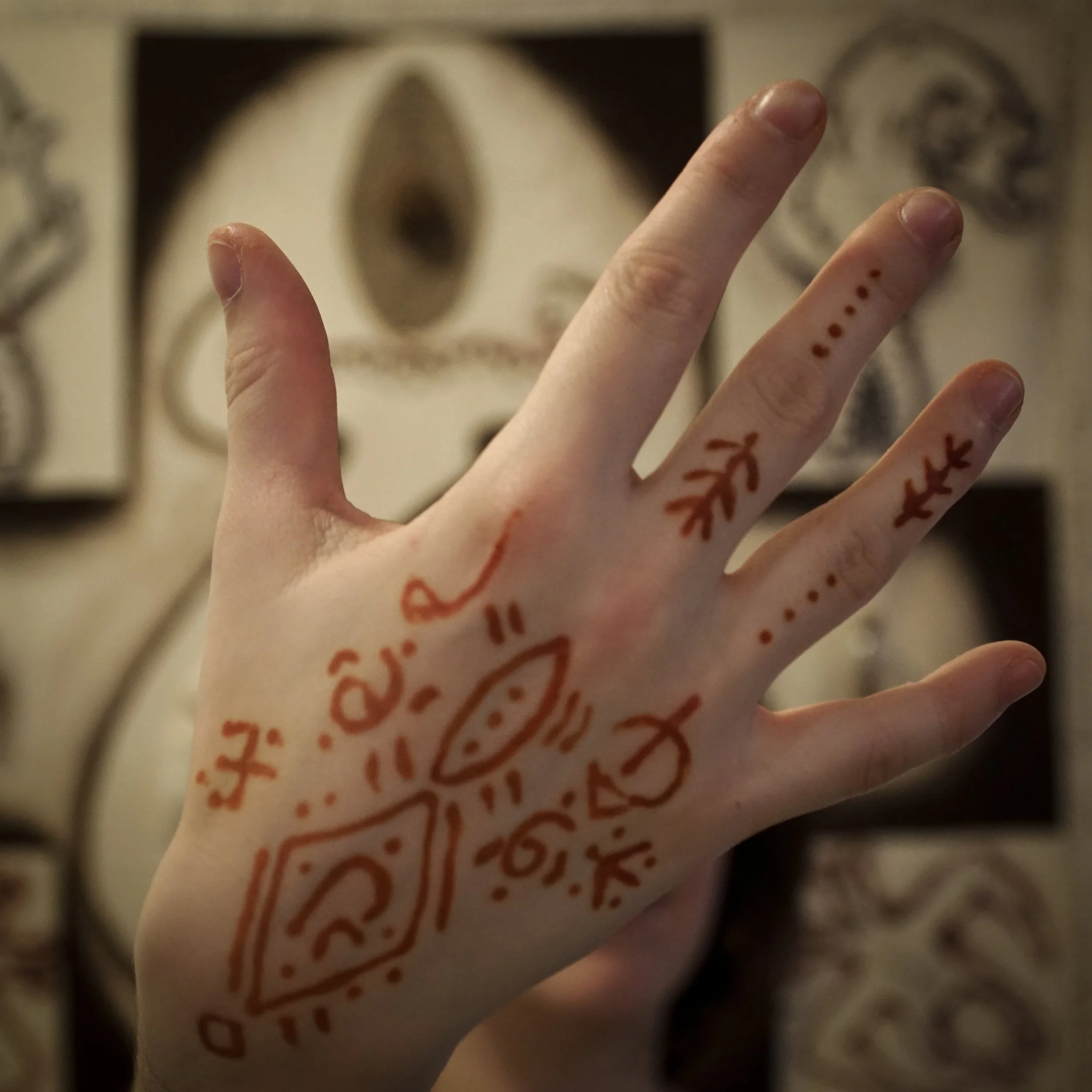L'ombre des ancêtres perdues2020
Relying on texts and images of Iranian women from the 20th century, I sought to understand their relationship with the outside world. To mark their presence and demonstrate their power on men, they mainly used magic. This exhibition is the result of my fascination with this magic and its various visual forms.
1 > Installation
In addition to the pieces displayed in the exhibition space, a performance, a soundtrack, and an artist's book were created for the event. To create a cohesive atmosphere, yellow lights were installed throughout the exhibition space. The floor was covered with nearly five hundred kilograms of sand. The large pieces were set up to be mobile, allowing space for performances. Viewers were invited to move around and experience the space up close.
2 > Chadors
The two large pieces, measuring three meters by one and a half meters, are inspired by the Chador, the traditional veil worn by Muslim women. The shape of this garment served as the foundation for creating a structure where disparate objects are arranged in surprising ways. Fur, ropes, eggs, moss, and medicinal plant sprouts are among the visible elements on these pieces. The Chadors are used here to transform a traditional garment into a magical canvas.
The performance is a choreography by myself, interpreted by Luane Dufroux-Vailland. It took place during the opening and closing of the exhibition.
An original soundtrack created by Sepas Saderenoori accompanied the movements.
3 > Performance
4 > Talismans
The smaller pieces on display are inspired by the aesthetics of talismans used in Iran. Their visual quality is marked by the coexistence of writing and drawing. Typically, the shapes illustrate the effects of the talisman, while the writings are excerpts from the Quran and the secret language of numbers. In my works, the drawings depict fictional demons, and the writings are texts related to current events in Iran. The pieces thus become talismans intended to resolve contemporary issues.
5 > Art Book
This project includes old postcard images depicting Iranian women photographed by Antoine Sevruguin, one of the first photographs of ordinary life in Iran. Seeing them, I began to wonder about the daily lives and the quality of life of these women. Today, there is very little trace of their identity, despite their strong presence in society. These reflections on forgetting allowed me to discover a visual quality that reflects this absence. The women's faces are masked and replaced by decorative patterns from the craft workshops where women primarily worked. The book is designed so that its pages can be detached and used as postcards
©Images courtasy of Mathieu and Thomas L’Heveder




